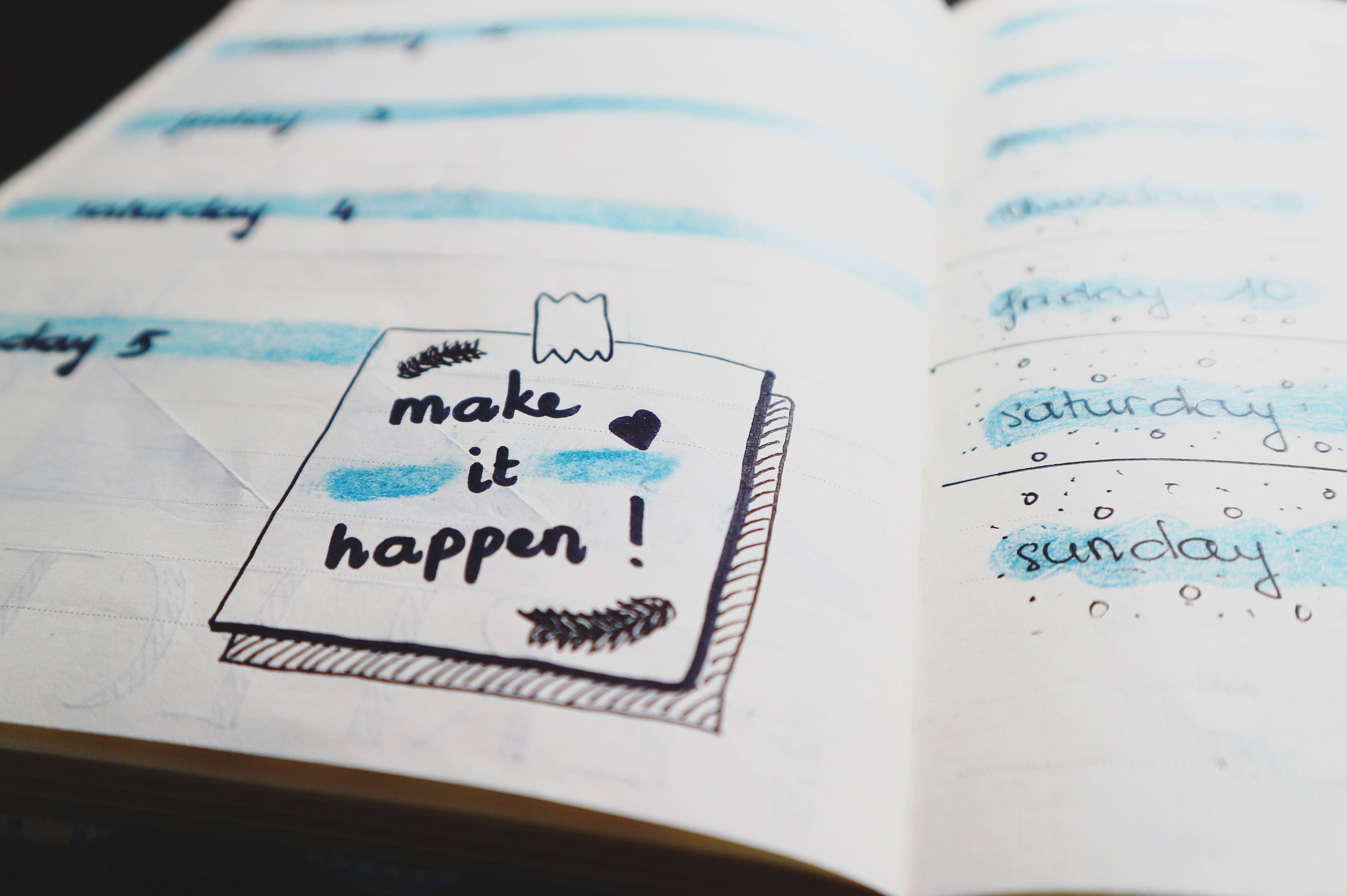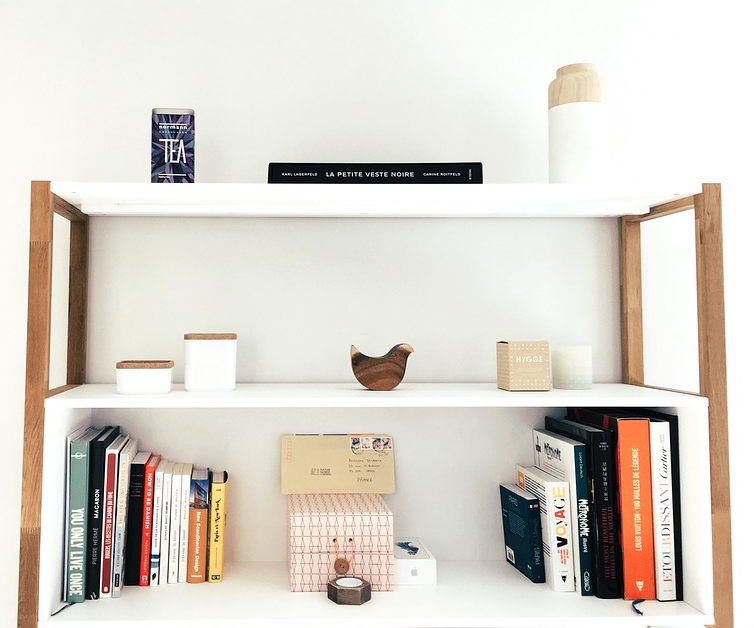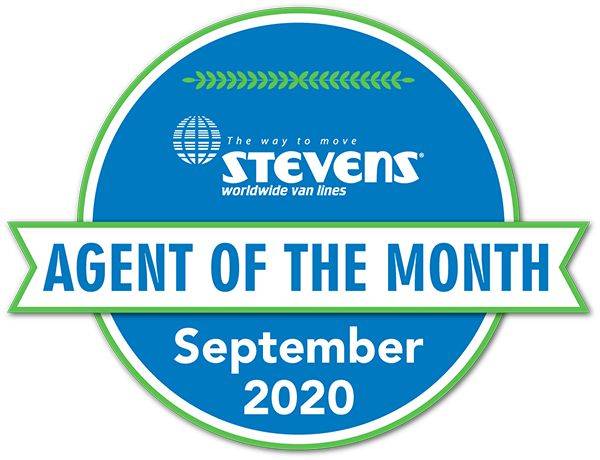12 Decluttering Steps You Can Take Right Now
 Over the years, we all gather a bunch of stuff. Whether it’s a sentimental collection of gifts from family and friends, or loads of random knickknacks, it’s always a good idea to condense and give yourself new room to breathe.
Sometimes having too much clutter can be overwhelming and you want it gone TODAY.
But, taking on a project like decluttering can feel like intimidating and you’ve likely surrendered to the mess before you’ve even tried conquering.
Before you give up, let us lend you a hand and break down some actionable steps you can take right this second to master that growing declutter pile.
Our ultimate guide will lay out methods and techniques that can help you get into the right headspace to approach this daunting task, and what to do with your items before, during and after you’ve decluttered.
So, sit back, grab a pen and paper, and let’s get started and de-cluttering!
Over the years, we all gather a bunch of stuff. Whether it’s a sentimental collection of gifts from family and friends, or loads of random knickknacks, it’s always a good idea to condense and give yourself new room to breathe.
Sometimes having too much clutter can be overwhelming and you want it gone TODAY.
But, taking on a project like decluttering can feel like intimidating and you’ve likely surrendered to the mess before you’ve even tried conquering.
Before you give up, let us lend you a hand and break down some actionable steps you can take right this second to master that growing declutter pile.
Our ultimate guide will lay out methods and techniques that can help you get into the right headspace to approach this daunting task, and what to do with your items before, during and after you’ve decluttered.
So, sit back, grab a pen and paper, and let’s get started and de-cluttering!
Get into the Mindset for Decluttering
 Benjamin Franklin once said, “Don’t put off until tomorrow what you can do today.” It’s good advice for all of us.
Keep his quote in mind and repeat it often throughout this process. This, among other supportive measures in this guide, will help you overcome this towering pile of declutter.
Be sure to write down a list of reasons why you want to declutter and when you feel yourself pulling away or slowing down, take a break and read through your list.
The mess will seem larger the more time you sort it but keep the endgame in sight and sooner rather than later, you WILL find yourself decluttered!
Benjamin Franklin once said, “Don’t put off until tomorrow what you can do today.” It’s good advice for all of us.
Keep his quote in mind and repeat it often throughout this process. This, among other supportive measures in this guide, will help you overcome this towering pile of declutter.
Be sure to write down a list of reasons why you want to declutter and when you feel yourself pulling away or slowing down, take a break and read through your list.
The mess will seem larger the more time you sort it but keep the endgame in sight and sooner rather than later, you WILL find yourself decluttered!
Handling the Guilt
Just because you’re thinking about giving some items away, or throwing them out, doesn’t mean they didn’t prove useful to you at one point in time. Apart from family heirlooms, antiques or extremely valuable sentimental items, you should take a moment to appreciate the positivity the item(s) brought to you, and let it go. Spending too much time reminiscing may detract you from your decluttering process. If you truly have a hard time parting with any items, don’t stress too much and set it aside to come back to later.
Use this 10-Minute Exercise to Help Declutter Faster!

5 Things to Consider Before You Begin Decluttering
 Before you start decluttering, keep a few things in mind while you’re sorting through your stuff:
Before you start decluttering, keep a few things in mind while you’re sorting through your stuff:
- Keep your goals in mind: Focus on why you want to declutter. Look at that list we created earlier and remind yourself that you can do this! Once you’ve gotten in the rhythm of decluttering and have an established process in place, your goals will feel much more achievable.
- Decluttering as a group: If this is a group project, try not to micromanage and help others declutter their own items unless they ask for help. If the group happens to be your family, perhaps assist the little ones in identifying toys from trash. Give them a simple task like throwing away broken toys to keep them preoccupied and give them a sense of responsibility.
- Identify clutter hotspots: Think about the first thing you do after you get home. Where are you setting your bag, coat or keys? What are doing with your mail when you bring it in from the mailbox? Your “clutter hotspots” will become more apparent if you retrace a normal day. Places like countertops, especially those that are near the front entrance, are likely spaces for clutter to gather.
- Create a checklist: Like we stated before, breaking down your process into bite-size pieces will help make this task a little easier. Take note of each room and the contents within and assign each room a day or two to declutter. Some feel getting the bigger rooms out of the way immediately help pave the way for the rest and vice versa. Whether you start with the smallest or the largest, it’s up to you.
- Take a break: Even if you’re a superhero, we all need a break sometimes. Don’t try and declutter in one day. In fact, it’s important to take breaks regularly to keep you from feeling burnt out too quickly, too early.
Prepping for Decluttering
Don’t be ill-prepared! Take a trip to your nearest supermarket or grocery store to grab some essentials that will help make this project even easier. If you already have what you need, you can skip this part, but if you’re looking for ideas on what to buy, here are just a few we had in mind:- Garbage bags
- Garbage can
- Storage bins and boxes
- Markers or labels
- Cleaning supplies, such as gloves, wipes, dusters, disinfectant
- Ladder/stepping stools
- Laundry detergent to wash dirty clothes/cleaning cloths
Make It Happen

Photo by Bich Tran from Pexels
- Block time out on the calendar. Pick the day and let others know you will not be available.
- Take a before photo. (This will come in handy later.)
- Start early in the morning. Grab a cup of joe, tea or an energy drink and dedicate at least two hours in the morning to getting started. Don’t overwork yourself and schedule in some breaks.
- Work category by category. This recurring theme is recurring for a reason: to avoid getting overwhelmed. Start with something easy and actionable, such as your clothing or books.
- Gather all the items in one place. That means every size. Every era. Everything you’re thinking about giving up.
How to Decide What ‘Sparks Joy’
There’s a reason why we’re all familiar with Marie Kondo and her famous “does it spark joy?” concept—because it works! Think about all the stuff you’re holding on to, was it great in that moment? Did it give you something special to hold on to during the tough times? Of course it did, and we wouldn’t dream of diminishing those feelings. But, think about how much it helps you now. You may have loved those items once before, but are they doing more than just taking up space? Don’t feel guilty or beholden to an internal obligation to keep these items. Thank them for the feelings they evoked and let them go.
Three Things To Avoid As You Declutter

Photo by Linda Eller-Shein from Pexels
- Don’t start with mementos. If you’re a highly sentimental person, perhaps a hands-off approach would be better suited for you. Have a friend or family member hold up the item and ask you whether you’d like to keep it. If you start with the items yourself, physically touching the item could bring back those feelings and cause you pause and reminisce, slowing down the decluttering process significantly.
- Don’t call out other people for their “junk.” When decluttering, it’s tempting to point out someone else’s failure. And it’s likely to cause a fight or defensive reaction. Instead, begin by decluttering your own spaces and cleaning your own mess. This typically sets off a chain reaction.
- Don’t push. Avoid pushing your items on to other people, making your hand-me-downs someone else’s burden. Some of Kondos’ clients revealed that they boxed up their childhood belongings they no longer needed in their own homes — and sent those items to be stored indefinitely at their parents’ homes for “safekeeping.” That’s not the point of your project.
Dealing with Difficult Categories When Decluttering
So, you want to cut down to the bare necessities — in your shoe closet, your dresser drawers, the garage. Why not declutter your home office? Paperwork is pervasive. Here’s how to declutter your home office.- Get rid of paperwork. Most paperwork can be discarded. Keep only three categories:
- Papers that need attention (forms that must be returned, bills to pay).
- Papers that must be kept (such as contracts).
- Other items that you feel should be saved for another reason. However, most paperwork, such as appliance manuals, old credit-card statements and the like, is not necessary.
- Take a stand when it comes to miscellaneous items. When it comes to these small items (maybe it’s a ticket stub or a cheap sticker from your cute niece), keep items you love. Not just because.
Go Minimal (And Stay Clutter-Free)
 If you’ve dedicated time to decluttering, you’re probably starting to feel good about yourself.
For example, the walkway is clear. It’s not just a path. Items stand out on your shelf; they’re not sharing the space with old lottery tickets and receipts.
Congratulations on making it this far!
Decluttering is time well spent, says Joshua Becker, who runs a site called BecomingMinimalist.com. But he emphasizes that decluttering only addresses a surface-level problem.
That’s the first step.
Here’s how to take this concept a step further to embrace minimalism:
If you’ve dedicated time to decluttering, you’re probably starting to feel good about yourself.
For example, the walkway is clear. It’s not just a path. Items stand out on your shelf; they’re not sharing the space with old lottery tickets and receipts.
Congratulations on making it this far!
Decluttering is time well spent, says Joshua Becker, who runs a site called BecomingMinimalist.com. But he emphasizes that decluttering only addresses a surface-level problem.
That’s the first step.
Here’s how to take this concept a step further to embrace minimalism:
- Challenge yourself to discover how little you need. One recent study shows that people spend up to $450 per month on impulse buys.
- Pick one item — just one! — from a collection to represent and preserve that memory of a collection that meant so much to you or a loved one and display it in your curio cabinet. The rest of the items can then be safely stored away safely in protective material, especially if the item you’re choosing to represent is part of a collection of fine china or other fragile items.
- Stop buying tchotchkes on vacation. Souvenirs for friends and family are great, but unless you’re specifically collecting items (i.e. snow globes, stamps, etc.), the rest is just clutter.
- Spend money on experiences, not things.
- Curtail excessive decorations. Having too many decorations in one space tends to overwhelm the eye and make a room look messier. Keep decor items down to a minimum, using only the items that really enhance the space and bring you joy.
Declutter Your Way to Profit: Host A Garage Sale

Photo by Clem Onojeghuo from Pexels
- Pick a date and begin setup in advance. Generally, about a month or two before a garage sale is a good time to get your things decluttered, in order and sorted. Check with your community to see if there are neighborhood-wide garage sale days, which will attract more customers.
- Don’t bite off more than you can chew. Decluttering doesn’t require you to conquer your entire home in one day. Section out a space each day or week to accomplish things easier and faster.
- Plan a sale once, or twice, a year. A sound decluttering strategy is one in which you clear out any unwanted or unused goods consistently. As you realize something in your home is no longer needed and in salable condition, set it aside in a designated garage-sale bin or charity bin. A clean home is a happy home! Plus, you’ll feel much better helping your community.
- Don’t buy plastic tubs…yet. Sometimes it’s easy to get ahead of ourselves when we’re planning a garage sale, and you may find yourself cutting into your profits before your first sale. For organizing and displaying items for your garage sale, use any sturdy boxes or condense plastic containers you already have. As you clear clutter from the house, you may find extra containers you weren’t aware of, saving you a few extra dollars in the process.
- Color code the items you’re selling. While you’re amid sorting through your items, keep a packet of colorful stickers nearby. These are cheap, usually purchased at a dollar store, and can help keep you organized when you’re pricing your items later. Each color can represent a specific price — and this also works as a cheap and efficient inventory system!
- Reuse your shopping bags. If you have leftover shopping bags from grocery trips past, hand ‘em out to your customers for ease and convenience. This doubles to clear out unneeded bags as well!
- Begin and end times and dates of the sale.
- Location of the sale.
- Large arrows indicating direction on the poster and along the road.
Declutter and Donate Your Unwanted Goods
We’ve already covered how decluttering can be intense, exhausting and beneficial to you on a psychological level. It can even be profitable! Keep those feelings coming! Now we’ll teach you how to help the greater good by giving your ex-clutter a chance to improve someone else’s life. Donating is part of the cycle of life and ownership of a durable object. You own it for a time, use it, enjoy it and then offer it out into the world to keep serving its mission.BEFORE YOU DONATE
 Remember that before you donate, you should ensure your items are not dirty, broken or “questionable” in quality or nature.
Check with the manufacturer of your donated good to make sure the item wasn’t recalled. If that’s the case, please contact the manufacturer and return the item.
If you’re looking to get rid of unused or old electronics, make sure the place you want to donate to accepts electronics. If not, electronic stores like Best Buy accept recycled electronics.
You can also use Call2Recycle to help you find drop-off locations for items like batteries or old cellphones in your area as well!
Remember that before you donate, you should ensure your items are not dirty, broken or “questionable” in quality or nature.
Check with the manufacturer of your donated good to make sure the item wasn’t recalled. If that’s the case, please contact the manufacturer and return the item.
If you’re looking to get rid of unused or old electronics, make sure the place you want to donate to accepts electronics. If not, electronic stores like Best Buy accept recycled electronics.
You can also use Call2Recycle to help you find drop-off locations for items like batteries or old cellphones in your area as well!
PLACES TO DROP OFF
Here’s a list of nationally recognized places that generally accept donations. Remember, always follow their criteria and donation guidelines before donating items:DONATE TO YOUR LOCAL SCHOOL
From elementary to college, all schools love donations! New and/or unopened office supplies are best, and individual schoolteachers accept donations as well. Miscellaneous arts and crafts supplies, pencils, pens and notebooks are all great examples. The younger kids in elementary specifically appreciate any donations in the form of gently used or new winter clothing, school clothing, backpacks, shoes and more.HELP OUT LOCAL RELIGIOUS ORGANIZATIONS
Charitability is a human trait and nondiscriminatory. Reach out to your local mosques, synagogues, churches, temples and any other religious establishments. They’re a hub of any community and are in tune with what the community needs.COMMUNITY CENTERS
Another hub is a community center! They have athletic activities and amenities like indoor and outdoor courts, free educational and art courses and many other goodwill services for the community. They’re often a great center for outreach, so look for yours and ask about what you can donate to help!FOOD PANTRIES
It goes without saying, but we’ll mention it anyway: PLEASE DO NOT DONATE USED OR ABOUT-TO-BE EXPIRED FOOD ITEMS. If you’re looking to declutter your pantry and give back, that’s wonderful, but do so not at the cost of someone’s health. Ensure you check your expiration dates and speak with your local food pantry about accepted items and health guidelines.Make Decluttering A Way of Life
Now that you’ve:- Processed your past.
- Cleaned your closets.
- Filed or threw away your paperwork.
- Hosted a garage sale.
- Delivered your items to charity.








